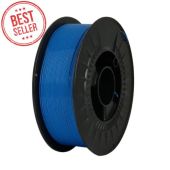PETG Not Sticking to Bed
Printing with PETG can be a rewarding experience because of its strength, flexibility, and resistance to wear. But one of the most common frustrations that users face is bed adhesion. If PETG is not sticking to the bed, it can cause failed prints, wasted material, and a lot of lost time. The good news is that adhesion problems usually come down to a handful of factors, and with the right adjustments, you can solve them.
Why PETG Requires Careful Bed Preparation
PETG behaves differently than PLA or ABS. It has higher adhesion strength than PLA but requires more precision in bed preparation than ABS. This means that if you get the settings wrong, you might either end up with no adhesion at all or with material sticking too strongly to the bed. Understanding the properties of PETG helps in identifying why it may not be sticking properly.
- PETG typically prints between 230–250°C.
- Bed temperature usually ranges between 70–85°C.
- It bonds aggressively to glass, sometimes too much.
- It benefits from a controlled environment without drafts.
These basic characteristics set the stage for how to improve bed adhesion.
Common Reasons PETG Does Not Stick
If your PETG print is peeling, curling, or lifting, one of these issues is often the cause:
- Bed Leveling – Even a slight misalignment of the print bed can cause poor adhesion. PETG requires an even first layer.
- First Layer Settings – A too-high nozzle or incorrect extrusion rate leads to poor contact with the surface.
- Bed Surface – The material and texture of the surface play a big role. Glass, PEI sheets, and build plates each react differently to PETG.
- Dirty Bed – Dust, oils from hands, or leftover adhesive from other prints can block good contact.
- Incorrect Temperatures – A bed that is too cold prevents proper bonding. A nozzle that is too hot can cause stringing without solving adhesion.
- Speed – Printing the first layer too fast reduces accuracy and prevents proper bonding.
By addressing these factors, you can usually solve adhesion problems quickly.
Solutions to Improve Adhesion
Bed Leveling and First Layer
Start with precise bed leveling. Use a feeler gauge or calibration sheet to ensure the nozzle is close enough to the bed without scratching it. The first layer should appear slightly squished, but not overly flattened. Adjust your slicer’s first-layer height and extrusion multiplier until the layer is smooth and even.
Bed Surface Options
Different surfaces work better for PETG:
- PEI Sheets: Offer consistent adhesion and easy removal.
- Glass: Works well if heated correctly, but may require a release agent (like a glue stick) to prevent over-bonding.
- Textured Build Plates: Provide mechanical grip for PETG and are easy to maintain.
Applying a thin glue stick layer or hairspray on glass can balance adhesion and release.
Temperature Adjustments
If your PETG is not sticking, try:
- Increasing the bed temperature in 5°C increments up to 85°C.
- Printing the first layer slower at 20–30 mm/s.
- Keeping the nozzle between 235–245°C for strong bonding.
Cleaning the Bed
Always start with a clean surface. Use isopropyl alcohol to wipe down glass or smooth surfaces. Avoid touching the bed with bare hands, as oils interfere with adhesion.
Enclosure and Draft Protection
While PETG does not require a full enclosure like ABS, avoiding drafts helps the first layer stay consistent. If you print near a window or fan, the temperature variations can cause warping or poor adhesion.
Troubleshooting Checklist
If your PETG print still fails to stick, work through this quick checklist:
- Is the bed perfectly leveled?
- Is the first layer height set correctly?
- Is the bed heated between 70–85°C?
- Did you clean the surface with alcohol?
- Are you printing the first layer slower than the rest?
- Are you using a suitable surface like PEI or treated glass?
Balancing Adhesion and Release
One unique challenge with PETG is that while sometimes it does not stick, other times it sticks too well and damages surfaces like bare glass or PEI. To prevent this, always use a light coating of glue stick on glass or PEI. This creates a barrier layer that allows PETG to grip during printing but release more easily once cooled.
Conclusion
When PETG is not sticking to the bed, the solution often lies in fine-tuning your setup—bed leveling, first layer adjustments, surface preparation, and temperatures. By addressing these factors, you can achieve reliable prints with strong adhesion that still release easily when the print is finished.
At 3D Trček, we specialize in high-quality filaments and accessories for 3D printing, including PETG and other materials. Our products are designed to help you achieve consistent, professional results every time you print.
; ?>) Shop PETG Filament
Shop PETG Filament


Please complete your information below to login.
Prijava
Create New Account